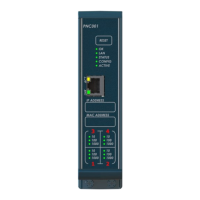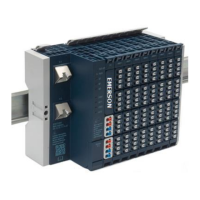PACSystems™ RX3i and RSTi-EP CPU Reference Manual Section 6
GFK-2222AK October 2019
Serial I/O, SNP & RTU Protocols 153
6.2.12 Autodial Function (4400)
This feature allows the CPU to automatically dial a modem and send a specified byte
string.
To implement this feature, the port must be configured for Serial I/O. After the autodial
function is executed and the modem has established a connection, other serial I/O
functions (Write bytes, Set Up Input Buffer, Flush Input buffer, Read port status, Write
port control, Read bytes, Read String, and Cancel Operation) can be used.
6.2.12.1 Example
Pager enunciation can be implemented by three commands, requiring three COMMREQ
command blocks:
Write Bytes:
04401 (1131h)
Specifies an ASCII string, from 1 to 250 bytes in length, to send
from the serial port.
It is the responsibility of the application program to hang up the
phone connection. This is accomplished by reissuing the autodial
command and sending the hang up command string.
6.2.12.2 Autodial Command Block
The Autodial command automatically transmits an Escape sequence that follows the
Hayes convention. If you are using a modem that does not support the Hayes convention,
you may be able to use the Write Bytes command to dial the modem.
Examples of commonly used command strings for Hayes-compatible modems are listed
below:
Pulse dial the number 1-503-555-9999
Tone dial the number 1-503-555-9999
Tone dial using outside line with pause
Restore modem configuration to
internally saved values

